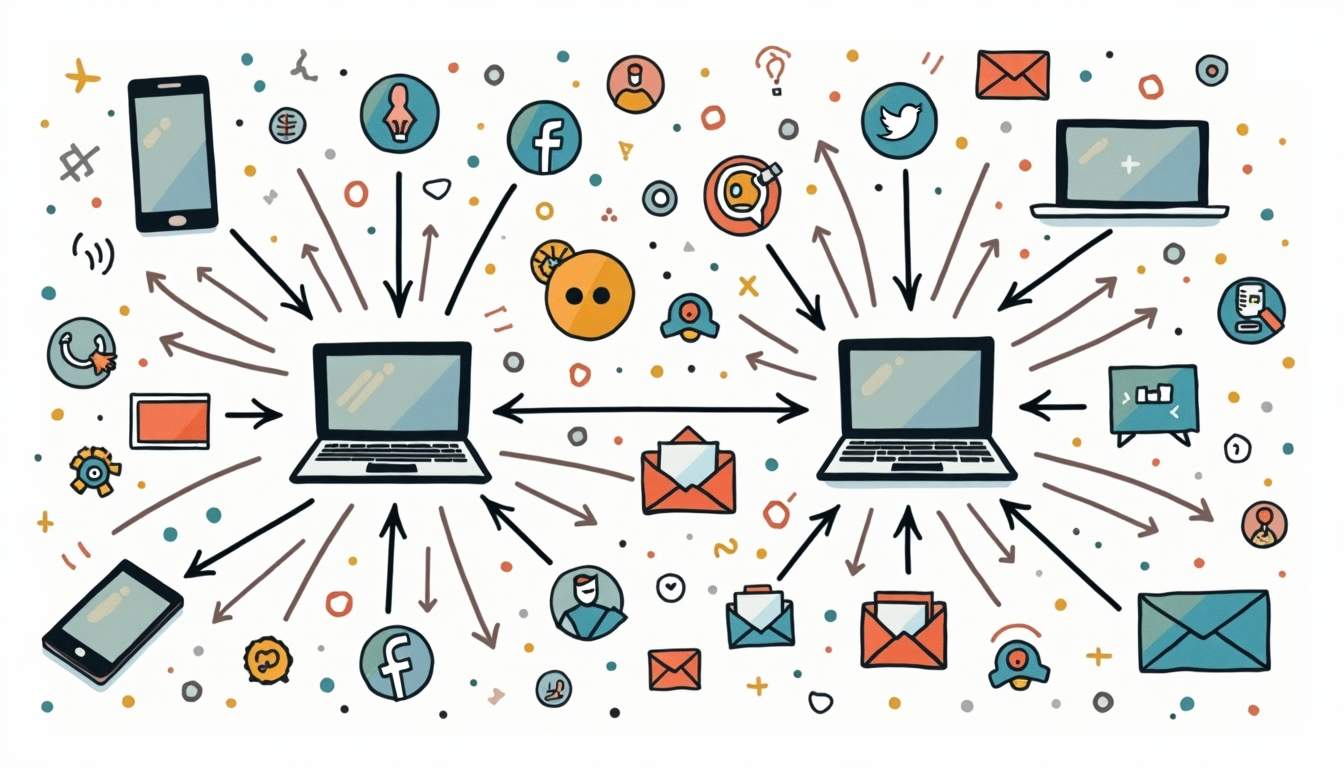In today's fast-paced digital world, a multi-channel communication strategy isn't just a nice-to-have; it's a necessity. Companies that embrace this approach are not only seeing significant revenue boosts but are also engaging their customers in ways that single-channel strategies simply can't match. Let’s dive into what makes a multi-channel strategy effective and how you can implement one that resonates with your audience.
Understanding Multi-Channel Communication
At its core, multi-channel communication involves reaching your audience through various platforms-think social media, email, SMS, and even traditional methods like print. The goal? To create a seamless experience that meets customers where they are. But why is this so crucial?
The Shift in Consumer Behavior
Today’s consumers are savvy. They don’t just stick to one channel; they flit between platforms, often within the same shopping journey. In fact, a staggering 72% of consumers prefer using multiple channels during their shopping experience. This means if you’re only communicating through one channel, you’re likely missing out on a significant portion of your audience.
Benefits of a Multi-Channel Approach
Implementing a multi-channel strategy can lead to impressive results. Companies that utilize multiple channels see an average revenue increase of 24%. That’s not just a small bump; it’s a game-changer. Additionally, businesses that engage customers through three or more channels experience a 250% higher engagement rate compared to those relying on a single channel.
Key Components of a Successful Multi-Channel Strategy
So, what does it take to create a successful multi-channel communication strategy? It’s not just about being present on every platform; it’s about being strategic and cohesive. Here are some essential components to consider:
1. Consistent Messaging
Your brand voice should be consistent across all channels. This doesn’t mean you have to say the same thing in the same way everywhere. Instead, adapt your message to fit the platform while maintaining the core essence of your brand. Inconsistent messaging can frustrate customers-74% of them report feeling annoyed when their experiences vary across channels.
2. Data Integration
Data is your best friend in a multi-channel strategy. However, integrating data from various sources can be a challenge. In fact, 60% of companies find this aspect to be a significant hurdle. But overcoming this challenge is crucial. By effectively integrating your data, you can gain insights into customer behavior, preferences, and engagement patterns, allowing for more personalized communication.
3. Customer-Centric Approach
At the heart of any successful strategy is the customer. Understanding their journey and preferences is vital. Companies with strong omnichannel engagement strategies retain an impressive 89% of their customers. This retention is often linked to the quality of the customer experience, which is enhanced through thoughtful multi-channel communication.
Implementing Your Multi-Channel Strategy
Now that you understand the components, how do you put this into action? Here’s a step-by-step guide to help you get started:

Step 1: Identify Your Channels
Start by identifying which channels your target audience frequents. Are they more active on social media, or do they prefer email? Use analytics tools to gather data on where your customers are engaging with your brand.
Step 2: Create a Unified Strategy
Once you know your channels, develop a unified strategy that outlines how you will communicate across each platform. This should include your messaging, tone, and the type of content you’ll share. Remember, the goal is to create a cohesive experience that feels seamless to the customer.
Step 3: Monitor and Adjust
After launching your strategy, it’s crucial to monitor its effectiveness. Are you seeing the engagement and retention rates you expected? If not, don’t hesitate to adjust your approach. Companies that implement multi-channel marketing see a conversion uplift of 3-4 times compared to single-channel campaigns, so it’s worth fine-tuning your strategy.
Challenges to Anticipate
While the benefits of a multi-channel strategy are clear, it’s essential to be aware of potential challenges. For instance, 52% of marketers cite effective channel integration as a top priority, yet many struggle with it. Additionally, maintaining consistent messaging across various platforms can be daunting, especially as your team grows.

Overcoming Integration Issues
To tackle integration challenges, consider investing in tools that facilitate data sharing and communication across channels. This can streamline your processes and ensure that your messaging remains consistent, regardless of where your customers interact with your brand.
Training Your Team
Your team plays a crucial role in executing your multi-channel strategy. Providing training on the importance of a cohesive approach can help everyone understand their role in delivering a consistent customer experience. This is especially important as 87% of marketers report that multi-channel efforts have increased their customer engagement.
Conclusion: The Future of Communication
As we move forward, the importance of a multi-channel communication strategy will only grow. With consumers increasingly expecting seamless experiences, businesses that adapt will thrive. Remember, it’s not just about being present on multiple platforms; it’s about creating a unified, engaging experience that resonates with your audience. Embrace the challenge, and you’ll likely see the rewards-both in customer satisfaction and your bottom line.

For more insights on multi-channel marketing strategies, check out the resources from WorldMetrics and Wifitalents.
